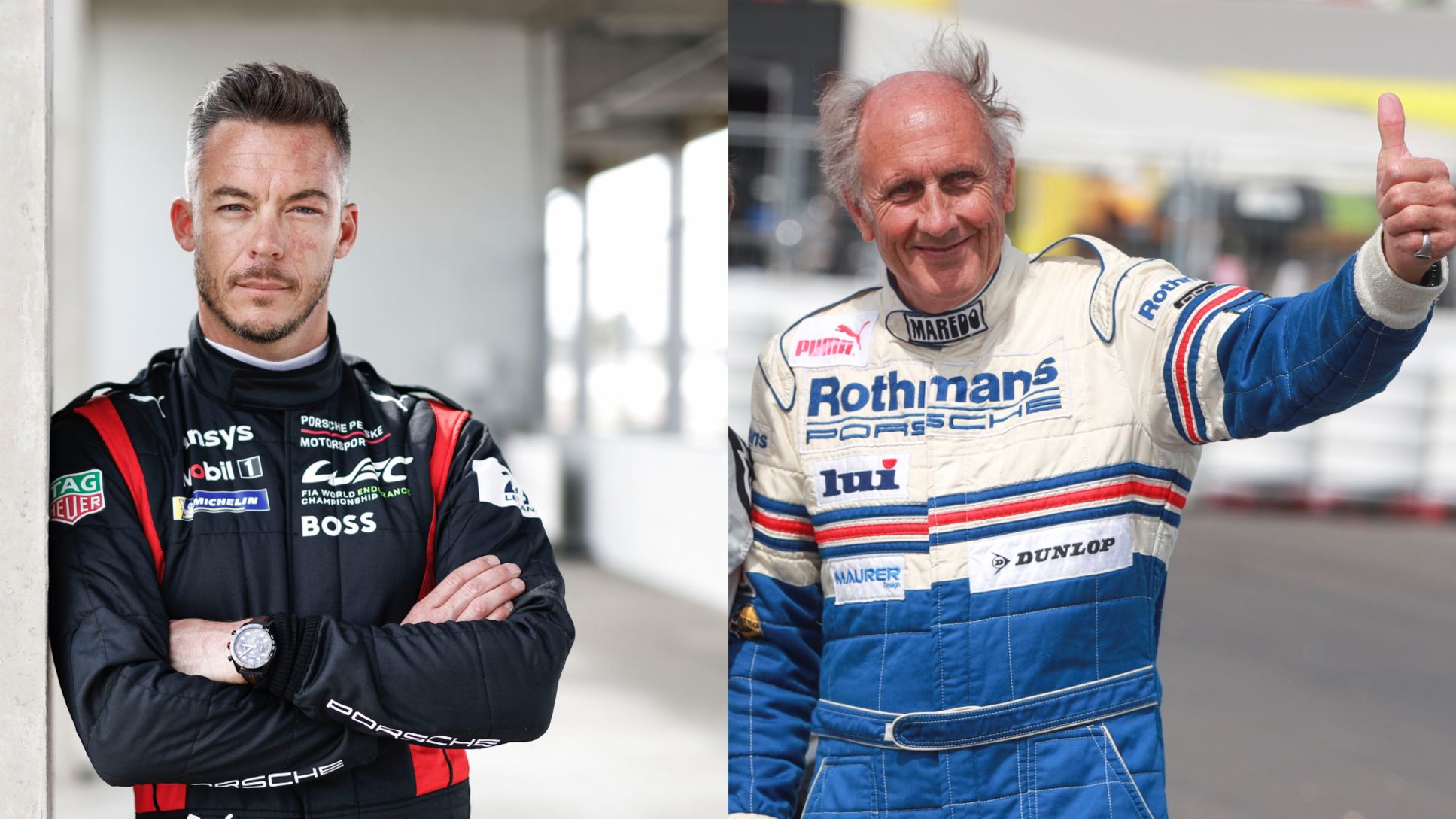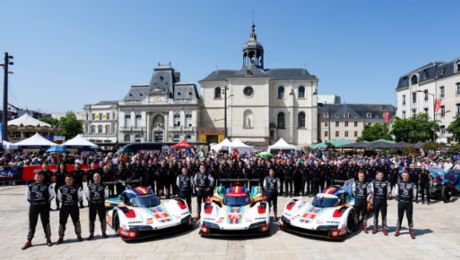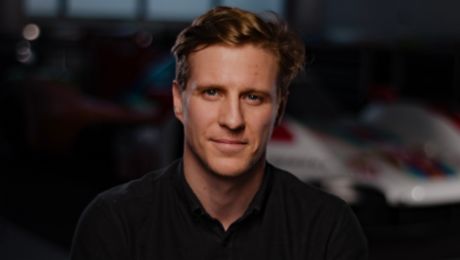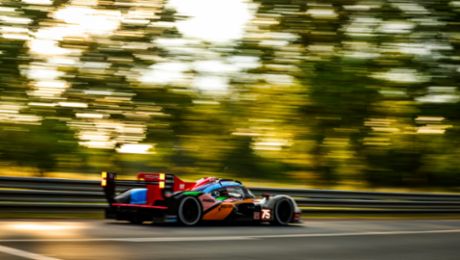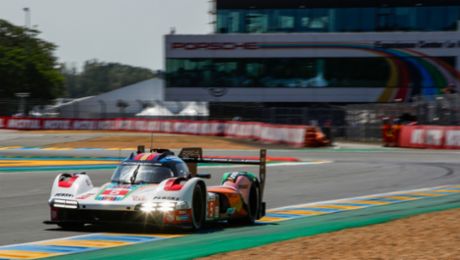Sebring, Stuttgart, São Paulo – André Lotterer's last few weeks sum up just how much travel is involved in being a modern-day racing driver. What was it like for you, Hans-Joachim Stuck?
Stuck: There were times in the 1970s when I drove 36 races a year in Formula One, Formula Two and touring cars. On a Saturday, I would be racing in F1 at Brands Hatch [UK] and on the Sunday I’d be in a touring car in Diepholz [Germany]. As a driver, you were on the road a lot back then, but it wasn't quite as exhausting as it is today.
You both come from racing-mad families. What role did Le Mans play in your youth?
Lotterer: For me, the focus was more on the Spa 24 Hours because I grew up in Belgium. My father ran a racing team there, but unfortunately it didn’t race at Le Mans. Of course, I always followed the race, and for me, even at a young age, the Group C racers were the coolest cars. There was no way around it! Because my father’s team was a Porsche customer team, they got big models of these cars. My dad had a Rothmans Porsche in his office, which I always wanted to play with but was never allowed to (laughs).
Stuck: I attended my father's last evening of racing – he drove until he was 62 years old and even won at Monza. Unfortunately, he never competed at Le Mans, but in conversations it became clear to me that there are three important races: the Indy 500, the Monaco Grand Prix and Le Mans. And I thought to myself, gosh, I'd like to win one of those. Indy didn't work out, in Monaco I came fourth once, but when I stood on the podium for the first time at Le Mans, I had achieved one of the three goals.
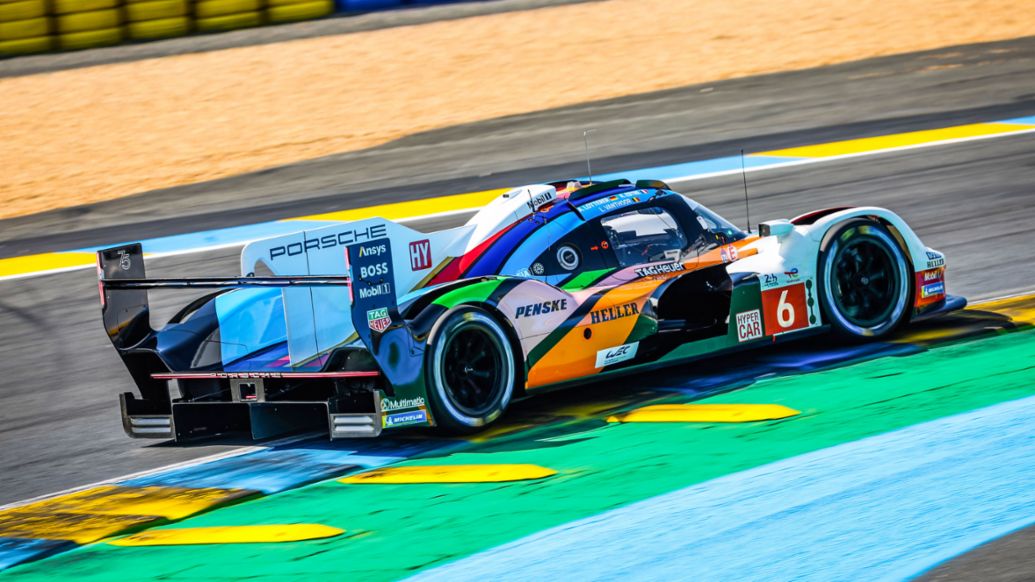
In your Le Mans debuts, you were able to draw on previous endurance experience. Did respect still outweigh that?
Stuck: I definitely had respect, even later. When I got the opportunity to drive for Porsche at Le Mans – and also before that in Formula One – today's safety standards did not yet exist. In Formula One I saw many fatal accidents. You knew what you were getting into. It weighed heavily on me, but as soon as I sat in the car and the engine was running, those thoughts were blown away. Otherwise I wouldn't have been able to do it. If you think about it, I was driving at up to 400 km/h at night on the long straight at Le Mans! Nothing could be allowed to go wrong.
Lotterer: Of course we're better off there. When I drove at Le Mans for the first time, the passion for this experience burst out of me. At the same time, however, I also felt a lot of respect because every little mistake on this track is punished severely. There are hardly any run-off zones, and you're often going over 300 km/h. You have to really concentrate and look ahead at all times. Because even if the cars are safe, something can always happen. Nothing has changed in that respect.
Did you have mentors who helped you at Le Mans?
Stuck: With Derek Bell, I had a very experienced man on my side and we knew that we could rely on each other. But there was no real exchange about, for instance, danger spots.
Lotterer: At my first Le Mans I started in a team that was making its debut there, as were all its drivers. My colleagues at Kolles at that time were Charles Zwolsman Jr and Narain Karthikeyan. The latter dislocated his shoulder jumping over the wall before the start, so we were a duo from the beginning. What was normal in Strietzel's day was a huge challenge for us. But my schooling in Japan with the faster Super GT cars prepared me well, because there are driver changes there too. The following year I joined the Audi works team, where I was very well supported by the experienced drivers.
Jacky Ickx and Tom Kristensen are considered great Le Mans champions. What made them so special at the Sarthe? And have you perhaps been able to learn something from them for your successes?
Lotterer: Fortunately, I took a few victories away from Tom.
Stuck: Well done (laughs).
Lotterer: Of course, you have to be in the right car at Le Mans. Because you can be as good as you want, but you need the right material. In addition, you need a little bit of luck at Le Mans – which is usually more of an empty phrase in motorsport. The impressive thing about Tom is that he has won six times in a row. On the one hand, you have to come through well each time – for example no punctures – and on the other hand, you have to beat your equally good colleagues in the other cars. To do that, your own team members have to deliver. Jacky's times were different in comparison. He was able to take another car if he had problems.
Stuck: After I joined the Porsche works team in 1985, I learned more than in my entire career before that. There was Peter Falk and Norbert Singer, but also the driver colleagues. While in Formula One it was only a matter of driving at full throttle, in Group C other topics were in the foreground with fuel consumption as well as paying attention to brakes and the synchronised five-speed gearbox. As a driver, you learned how to handle the car properly in order to be successful. I often tested in Weissach until late at night and then drove back to Garmisch. And also in Le Castellet nobody asked for time for lunch during testing, you always had to line up. That was damned hard, but also damned cool.
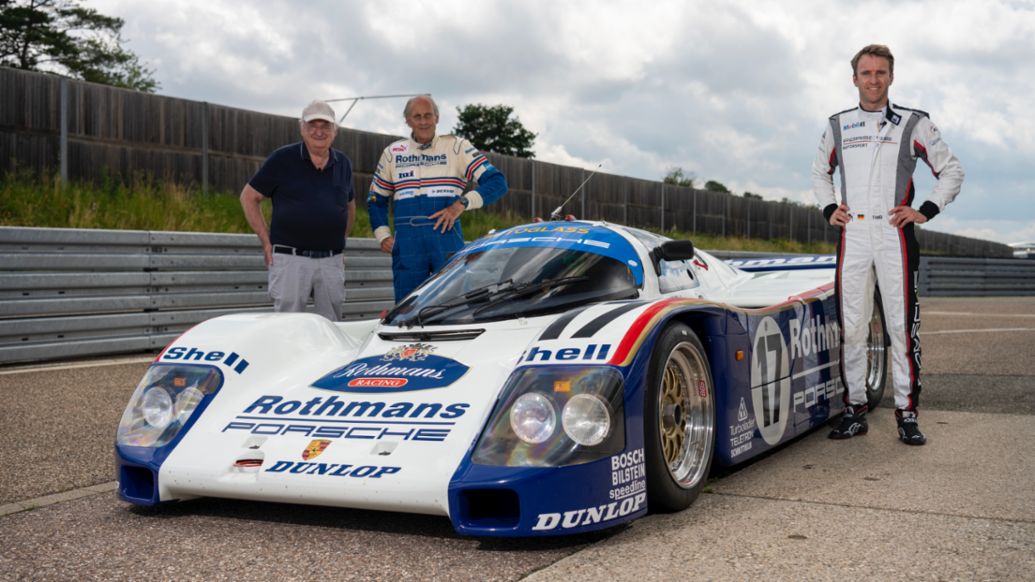
Originally we wanted to ask you, Stucki, whether you are now happy that you worked back then largely without simulators and data analysis. But that sounds similarly time-consuming now?
Stuck: Recently I was able to drive some newer racing cars and I'm glad that I know both. If I had to say now which was more beautiful, I would find it really difficult. Today you can concentrate much more on driving. Back then, you had to look more at the instruments to check the oil pressure, for example. And shifting errors are no longer possible in this form. On top of that, there are driving aids like ABS. In the past, driving was certainly a much greater challenge, I have to be honest. However, the sport has become very tight now, it's all about tenths, hundredths and thousandths.
Lotterer: I'm already jealous of your time, I have to tell you that honestly. With LMP1, I also experienced a mega era in which the cars drove bombastically around the corners. Just remembering how you could let the LMP1 fly at Spa and have qualifying pace every lap – and be behind the wheel for almost four hours! Group C, however, had great cars in a different way. My feeling is that times were a bit looser then, but more purist at the same time. I experienced the change myself in the course of my career. In the beginning, I got out, talked to my engineer and did a few meetings. Now I do my own administration. That means I can create reports online on a laptop provided by the team so all the engineers can access them. There are also simulator sessions. To start with, you had to motivate yourself to carry out such tasks, and accept the challenge professionally. Even if you thought: ‘I just want to get on the track!’.
Stuck: It’s interesting you mention computers. In 1987/1988 we started with telemetry. Suddenly you could compare yourself with others and spend much longer fiddling with details. Before that, it was only the seat of your pants that could report what the car was doing.
Fuel saving was to Group C, what energy management was to LMP1. Is that a fair comparison?
Stuck: Absolutely! Saving fuel in Group C and the driving style adapted to it were a challenge. It's similar in Formula E, which is why I think it also has a justification.
Lotterer: With the start of the hybrid phase, many things changed very quickly. Depending on the regulations, you had to keep to a certain energy limit per lap. In the beginning, as drivers, we did it manually because we didn't like it taking over our car by switching from throttle to coasting mode by itself. I controlled it myself using the info on the steering wheel. Then with the increase of coasting, the cars did it automatically. In parallel, we had to master the combination of braking and MGU deceleration and the corresponding distribution of recuperation. These tools had a big influence on the balance, including the differential lock. In Formula E, it became even more exciting for me because you can control the race yourself through energy management.
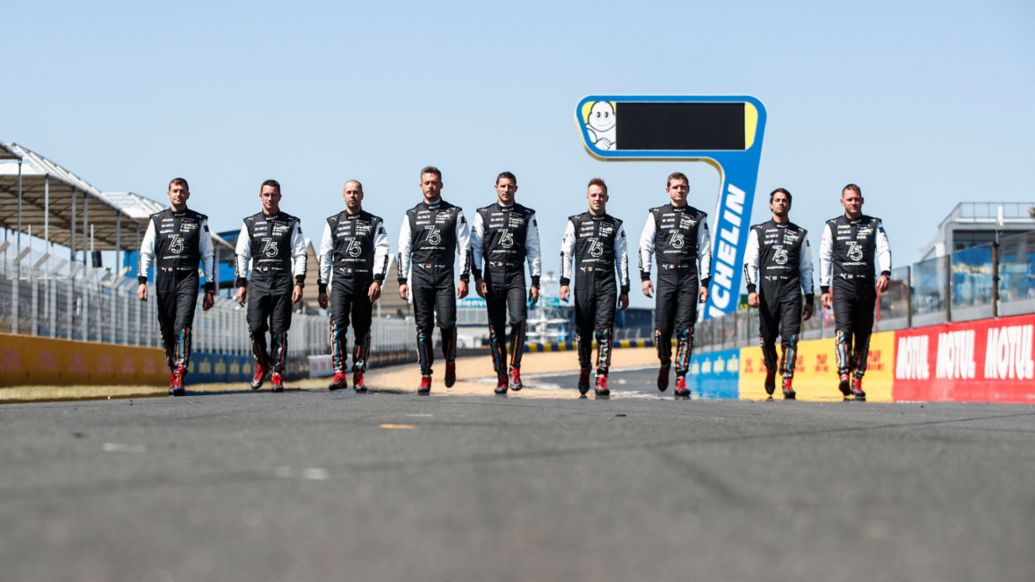
The cliché is that drivers used to drive at only 70, 80 per cent to preserve energy. Was it really like that?
Stuck: Overall, you drove at 100 per cent, but with the means you need to get there in the end. For example, if you are aiming for certain lap times, you have to brake more and so maybe change the pads twice instead of just once, which means an additional stop. The driver has to calculate this interaction and consider whether a gentler driving style will save a further stop. The same applies to saving fuel. At Le Mans you have 23 stops, so saving fuel can make a difference.
How has the challenge of the course changed over the past 50 years?
Lotterer: I don't know the version without chicanes, of course, but I would have liked to have experienced it – just like driving at 400 km/h. My personal top speed was 370 km/h with the Porsche 919 Evo at Spa, which is an awesome figure! That was the crowning glory of everything I've driven in my career and proved how modern regulations have to slow cars down. I think some corners have become faster at Le Mans because of run-off zones. The challenge remains mega, because a sports car comes to life on such big tracks and lets you enjoy it that way. In the Porsche curves, things really get going, because you hardly brake there. The track simply doesn't forgive even small mistakes.
Stuck: I last drove Le Mans in 1998, but I can say that the challenge has always been the same. There is a funny anecdote about the time before the chicanes. From 380 km/h upwards, the interrupted white centre line became a solid one – so we drivers knew: Aha, we are approaching 400 km/h.
Lotterer: How long did you go so fast and did you have to take it easy on the engine?
Stuck: Not at all! We really drove at full throttle. We reached speed in the first third and then went down to 400 km/h. Then came the kink, for which you had to aim a bit, and then the important braking point on the Mulsanne (Straight).
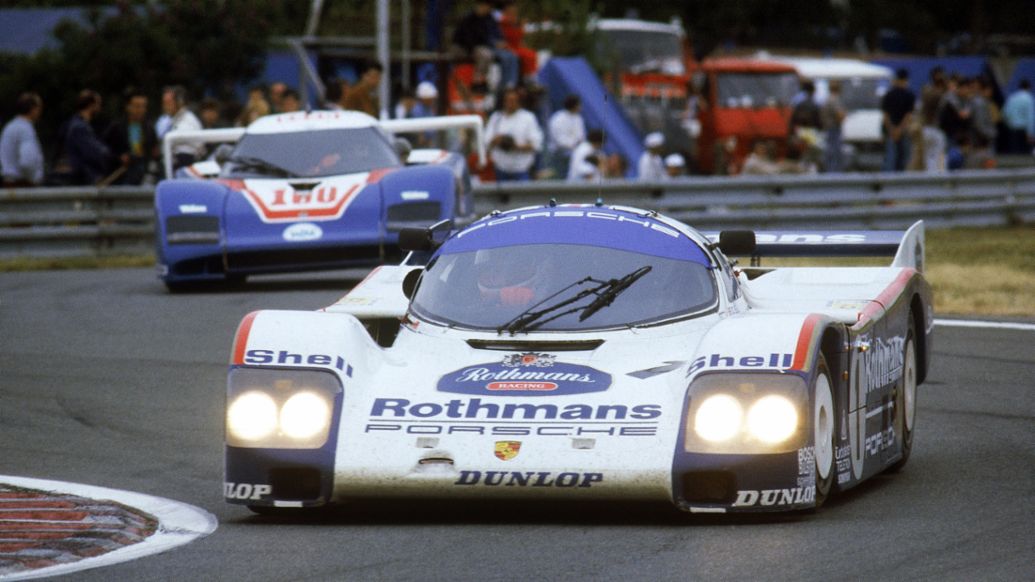
Where would you both be without Le Mans?
Lotterer: Probably still on the road in Japan (laughs).
Stuck: I have to say this clearly: without Le Mans I wouldn't be where I am today. It was a very important highlight of my career and part of my three most beautiful victories. A Le Mans winner is, and remains, a Le Mans winner.
Lotterer: It's practically written on your forehead. This race changes your life. At the same time, the success is also a huge thank you to everyone who believed in us drivers from an early age and invested in us since karting. With this, you have finally arrived.
Info
Text first published in auto, motor und sport. The interview was conducted by Philipp Körner.
